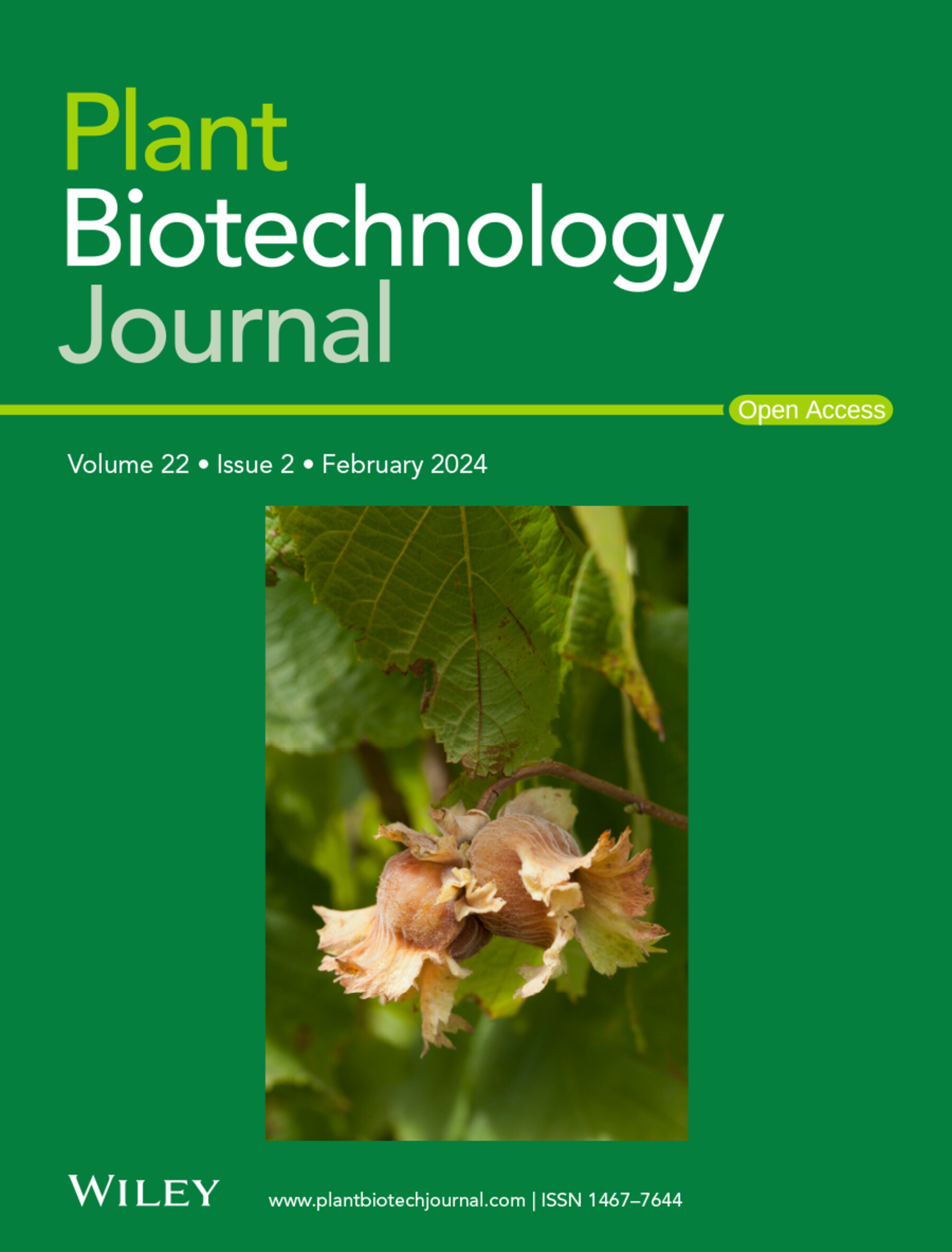The ZmFKF1b‐ZmDi19‐5 Regulatory Module Coordinates Drought Tolerance and Flowering Time in Maize
IF 10.5
1区 生物学
Q1 BIOTECHNOLOGY & APPLIED MICROBIOLOGY
引用次数: 0
Abstract
Drought is a major environmental stress that inhibits plant growth and reduces crop yields. TheZmFKF1b‐ZmDi19‐5调控模块协调玉米的耐旱性和开花时间
干旱是抑制植物生长和降低作物产量的主要环境压力。已知Di19基因家族在介导植物对干旱的反应中起关键作用。然而,在玉米中,Di19蛋白将干旱响应与发育过程(特别是开花时间)结合起来的机制在很大程度上仍然未知。在这项研究中,我们发现ZmDi19‐5在调节玉米的耐旱性和开花方面具有双重功能。过表达ZmDi19‐5不仅提高了抗旱性,而且延迟了开花时间。此外,我们证明ZmDi19‐5和ZmFKF1b蛋白在体内和体外都相互作用。与zmfkf1b突变体相比,过表达zmfkf1b的植物对干旱的敏感性增加,开花速度加快。从机制上说,与ZmFKF1b的相互作用减弱了ZmDi19‐5与其下游靶标(包括转录因子ZmHsf08和开花抑制剂ZmCOL3)启动子的结合,随后影响了它们的表达。综上所述,ZmFKF1b‐ZmDi19‐5模块能够协调玉米的干旱胁迫响应和开花时间,为培育具有稳定农艺性状的抗旱玉米品种提供了一个有希望的靶点。
本文章由计算机程序翻译,如有差异,请以英文原文为准。
求助全文
约1分钟内获得全文
求助全文
来源期刊

Plant Biotechnology Journal
生物-生物工程与应用微生物
CiteScore
20.50
自引率
2.90%
发文量
201
审稿时长
1 months
期刊介绍:
Plant Biotechnology Journal aspires to publish original research and insightful reviews of high impact, authored by prominent researchers in applied plant science. The journal places a special emphasis on molecular plant sciences and their practical applications through plant biotechnology. Our goal is to establish a platform for showcasing significant advances in the field, encompassing curiosity-driven studies with potential applications, strategic research in plant biotechnology, scientific analysis of crucial issues for the beneficial utilization of plant sciences, and assessments of the performance of plant biotechnology products in practical applications.
 求助内容:
求助内容: 应助结果提醒方式:
应助结果提醒方式:


